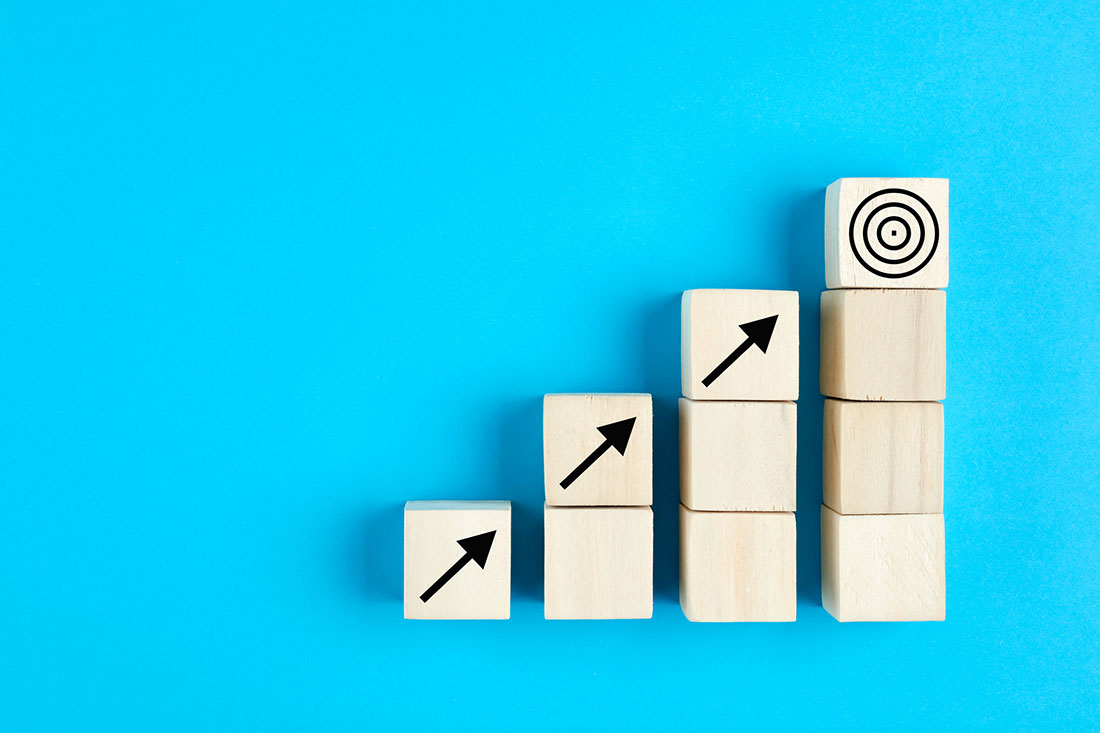In a time of raging content overload, few marketers actually know what to do with their abundant content.
Enter the B2B customer journey. Buyers tend to go through four distinct phases (awareness, consideration, decision, and relationship) before deciding to purchase or repurchase a product or service. And no matter where customers are in their journey, content matters.
According to Demand Gen Report’s B2B Buyers Survey, 76% of buyers said delivering relevant content that speaks directly to them was “very important” in their purchasing decision. But only 41% of B2B marketers craft content aimed at specific points in the buyer’s journey.
If you know what your customer is looking for, you can use content more strategically. But how do you know what type of content is right for a customer at any given journey stage? A lot depends on the type of person you’re targeting—but a few broad guidelines apply.
Awareness: Introducing Your POV and Establishing Credibility
In the awareness stage, buyers know they have a challenge or opportunity and actively seek a solution. Maybe they’ve heard of your company before; maybe they haven’t. To change the status quo of your prospect’s mindset, you need to establish credibility and thought leadership—before you ever start talking about your products.
How do you do that? Offer information and resources that address your customers’ needs, challenges, goals, and opportunities. Some content types that work well in this stage are:
- Third-party analyst reports
- Commissioned research
- Company POV briefs on key topics
- Business trends or forecast features (short videos)
- Brief, high-profile customer success stories
- Infographics
- White papers (depending on the topic)
Whatever you do, do not push your products at this stage, or any thought leadership will be undermined.
Consideration: Helping Buyers Evaluate the Options
In the consideration phase, buyers identify several possible solutions and weigh the benefits. At this point, customers are looking around and exploring customer reviews. You can help buyers narrow their options by introducing your solutions and positioning your company to meet their needs. Content types include:
- Competitive guides or solution comparisons
- Solution overviews/briefs
- White papers that go more in depth about solutions
- Demos
- Data sheets (in late consideration and depending on the audience)
- Case studies
Decision: Diving Deeper into the “How”
When making a decision, buyers confirm, justify, and finalize their transaction. Instead of the higher-level and comparative information consumed in earlier stages, buyers at this point need more of the technical details that help them understand your solution and how it’s going to integrate with their current environment.
Though these content types may seem less sexy from a creative standpoint, they’re just as important as any video or infographic. Potential buyers will be looking for resources such as:
- Data sheets and specifications
- Deployment/integration/migration guides
- Quick-start guides
- Compatibility guides
One thing to note: Peer and industry customer references or case studies are important for almost every stage. Nearly half of respondents in the CMI B2B Content Marketing Survey reported that case studies were the most successful content type. Potential buyers at any stage like to see how other companies (preferably in their industry) have succeeded.
Relationship: Maintaining Customer Loyalty
During the relationship stage, satisfied customers become advocates for your brand and buy again over time. That means twice the value for you, given that 65% of buyers cite peer recommendations and review sites as influencing their decision making.
The key here is to use content to drive advocacy and future sales. An educational white paper might not be right for a returning customer, but a webinar on upgraded product features could be. Keep in touch with your customers with loyalty programs or promotions, and offer relevant content such as user guides, webinars for continuing education about a product, or newsletters promoting upcoming events.
It’s not Just About the “What”—It’s About the “Who”
The above is just a fragment of the types of content you can create for each journey stage. But more important than the type of asset you create is who you’re creating it for. In other words, you can’t just write a white paper, post it on your website, and hope Joe CMO from Company X will download it. You have to consider what Joe cares about and what his pain points are.
Are you aiming to reach the C-suite executive (that’s a hard get, by the way) or the in-the-trenches technical person? Well, they don’t consume the same types of content. Don’t waste your users’ time—give them the meaningful content they need to accelerate their journey.
To learn more, watch our video on the customer journey and why using your content wisely greatly increases content ROI. You can also read more about developing meaningful personas in this blog post.
We do deep persona work and buyer’s journey mapping for our clients. If you’d like Tendo to provide actionable recommendations and insights, contact us.








